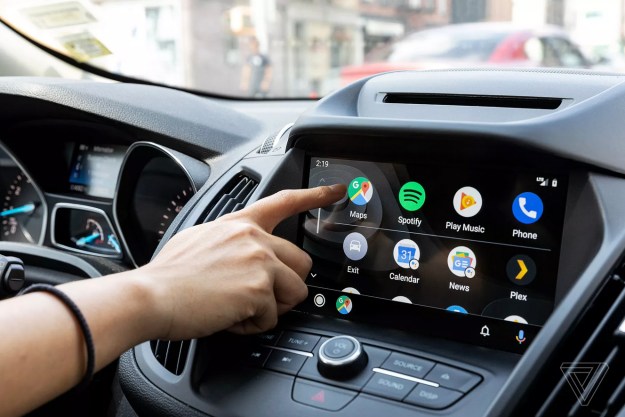
In such scenarios, car could meet human at some speed, a coming together that in normal circumstances could result in a nasty injury for the unlucky person on the outside of the vehicle, or worse, death. Of course, Google, as part of its ambitious driverless car project, has spent time thinking about such possibilities, and has come up with the idea of putting an airbag on the outside of the vehicle. That’s right, we’re talking external airbags.
A patent for the design, which has just been granted by the U.S. Patent and Trademark Office, explains how the airbag would be concealed within a specially made bumper. Now, you may be thinking, “Yeah, but any guy slammed with a Google airbag is gonna get bounced right out of town straight into the nearest cemetery,” or something along those lines.
But the Mountain View company has thought of that, too. To minimize the chances of killing the pedestrian rather than saving their life, Google explains that its airbag would be made with a special visco-elastic material, akin to the memory foam in a mattress.
According to the patent, such material “does not immediately return to an original shape after impact thereby reducing spring back of the bumper on the pedestrian.” In other words, it should have a reasonable amount of give in it, reducing the chances of serious injury, though having said that, it’s easy to imagine the pedestrian still hitting the deck after bouncing over the hood and possibly the roof as well, albeit with legs intact.
Volvo
If the idea of an external airbag sounds familiar, that’s probably because in the dim and distant past you heard about Volvo working on a similar concept, though its design has the airbag inflating around the base of the windshield, the area where a pedestrian’s head could land in the event of an accident. However, there’s nothing in Volvo’s design to protect the pedestrian’s legs, suggesting the two companies would do well to collaborate on a more complete external airbag system.
Still, it seems like Google’s airbag is, at this stage, simply an idea, so we’ll just have to wait and see if it the company eventually decides to incorporate it as a safety feature of its self-driving car.
Editors' Recommendations
- Google is bringing Chrome browser to cars, even more EV features to Maps
- Dubai Police to deploy driverless patrol cars with AI smarts
- Apple wants to supercharge CarPlay, but here’s why carmakers won’t bite
- Mercedes-Benz brings ChatGPT voice control to its cars
- Wildfire smoke prompts Google to issue work-from-home advisory


